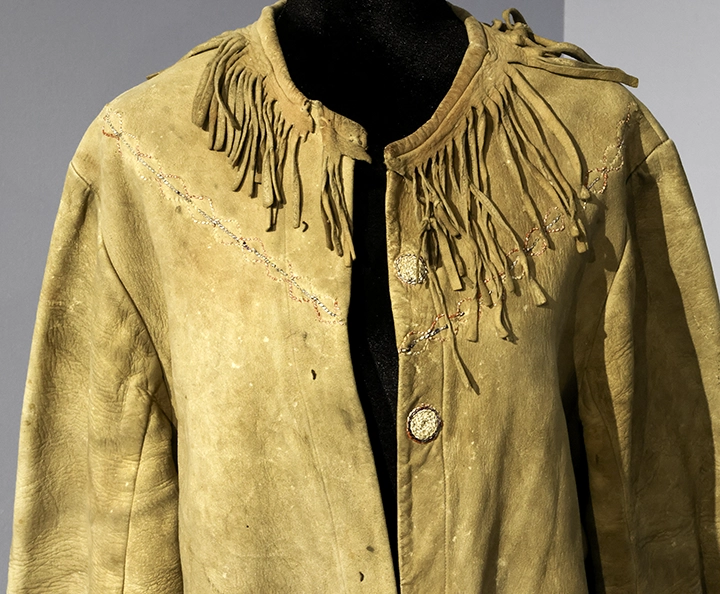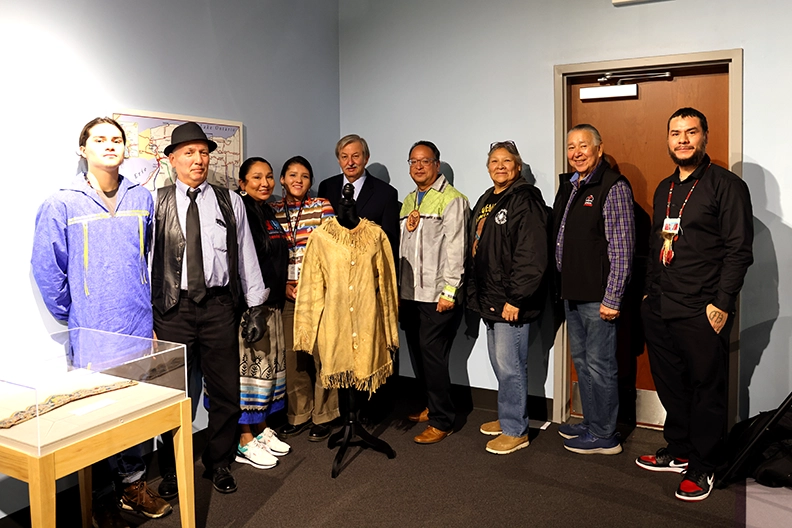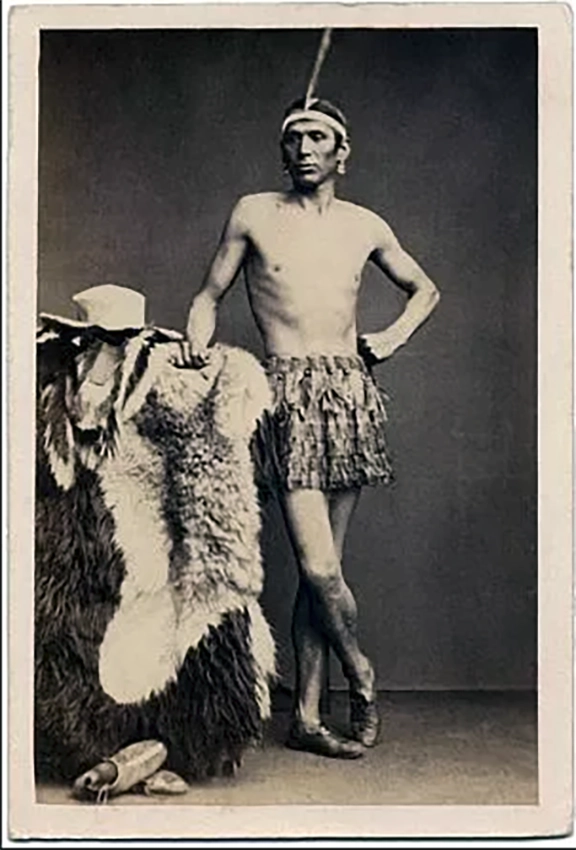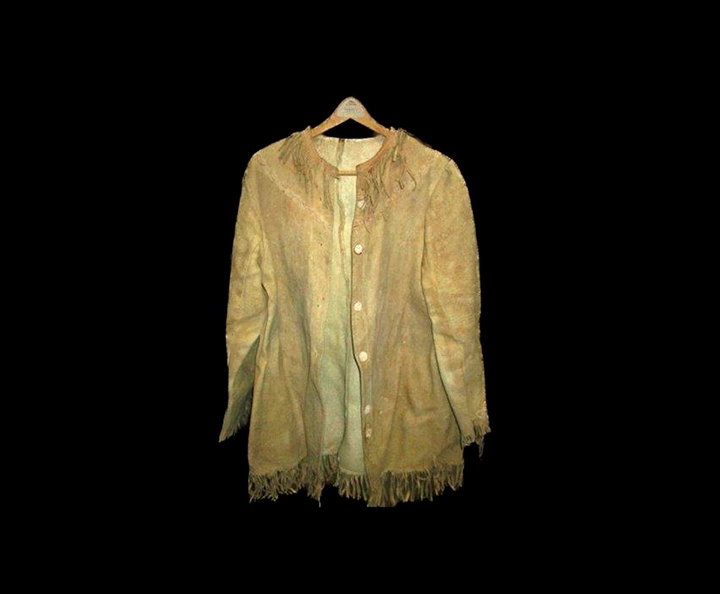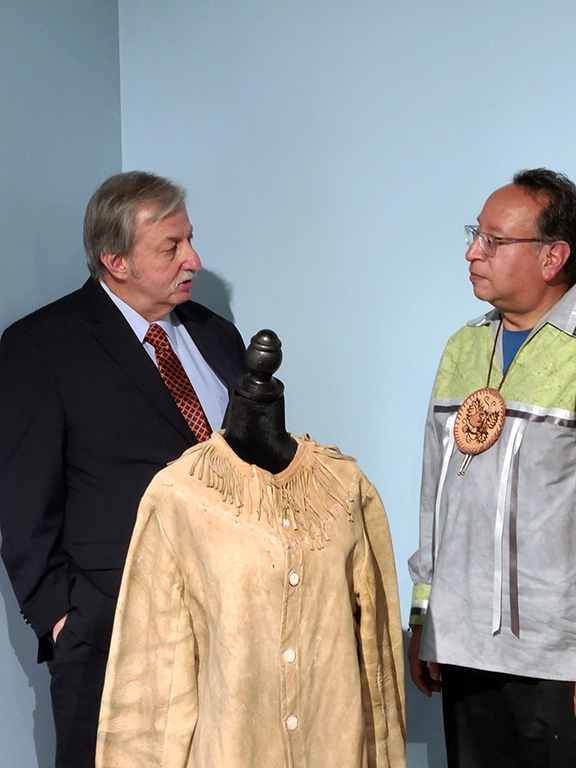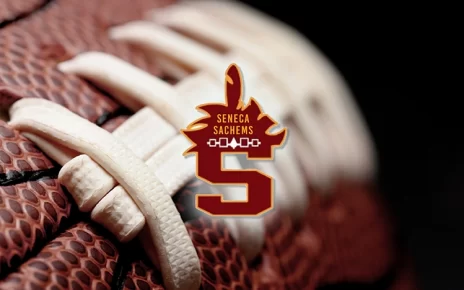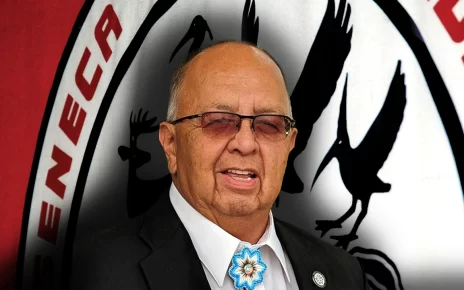Seneca Nation Celebrates Return of Jacket Belonging to Legendary Seneca Athlete Lewis “Deerfoot” Bennett Jacket
Now on display at Onohsagwe:de’ Cultural Center
Allegany Territory, Salamanca, N.Y. – More than a century after his passing, legendary Seneca athlete received a special welcome back to Seneca Nation territory on Friday, October 20, 2023.
Nation representatives and descendants of Bennett were in attendance at the Onohsagwe:de’ Cultural Center on the Nation’s Allegany Territory for a special gifting ceremony to celebrate the return of a leather jacket that once belonged to the world record-setting runner. The jacket had been in the possession of the Gowanda Area Historical Society since the early 1980s, when it was gifted to them by Sadie Bennett.
“These aren’t objects,” said Hayden Haynes, Director of the Onohsagwe:de’ Cultural Center. “Everything here is tied to all of us who are Seneca and Haudenosaunee.”
Bennett, a member of the Snipe clan, who gained worldwide prominence as a competitive runner in the mid-1800s. He first gained attention in 1856, when he won a local race by running five miles in exactly 25 minutes. He eventually caught the eye of notable race promoter George Martin, who booked Bennett on a 20-month European tour from 1861-1863.
Competing against the best British and Irish runners, Bennett set multiple world records, running ten miles in 51:26, and 12 miles in 1:02:02.
After returning to America, Bennett raced primarily in Western New York, New York City, and Boston. In 1868, he won a five-mile race in Buffalo in 24:15, after giving his competitors a quarter-mile head start. It is also said that Bennett once defeated a horse in a sprint race. He he ran his last competitive race in Montreal in 1870, at the age of 40.
After he finished his competitive racing days, Bennett continued to run exhibition races at various agricultural fairs and events on the territories of the Haudenosaunee. He lived the remainder of his life on the Seneca Nation’s Cattaraugus Territory. Bennett passed away in 1896, and is buried in Forest Lawn Cemetery in Buffalo, where many local runners pause by his grave. He was inducted into the Greater Buffalo Sports Hall of Fame in 2011.
“Deerfoot has a place in our history that nobody can replace,” Seneca Nation Councilor Maurice A. John, Sr., a descendant of Bennett, stated. “It is very important that we honor those who went before us. As long as we have people we can look up to, we can keep our history alive.”
The jacket is made of animal hide, has a long fringe, and is decorated with quillwork on the front. It will join a beaded headband that belonged to Bennett, which the Onohsagwe:de’ Cultural Center already has in its possession. Both items are now on display at the Onohsagwe:de’ Cultural Center.
“I am pleased and privileged to present this jacket to the Seneca Nation, because this is where it belongs,” said Phil Palen of the Gowanda Area Historical Society. “I am sure it will be in great hands forever.”
Deerfoot Bennett’s jacket joins other notable items returned to the Seneca Nation in recent years, including a pipe tomahawk given to respected Seneca leader and diplomat Cornplanter by George Washington, and a peace medal Washington gave to Seneca leader Red Jacket in 1792.
Measuring 33,000 square feet, the Onohsagwe:de’ Cultural Center is inspired by Native oral history and designed to guide and immerse visitors throughout with a variety of exhibits, collections, artifacts, educational programs and special events. The center is open seven days a week. For information, visit senecamuseum.org.

